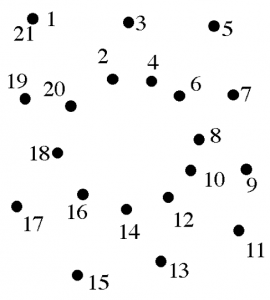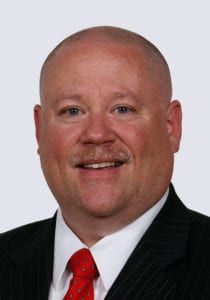
Understaffing can have a big impact on first responder safety. We all know that. But it can also have a huge impact on first responder situational awareness… more than I ever imagined. I have experienced understaffing issues many times throughout my career but I never gave much thought to how my situational awareness was being impacted by it.
That is the stealthy nature of flawed situational awareness. You can lose it and never know it. One of the findings in my research was understaffing is a barrier to situational awareness – and a big barrier too! Out of the 116 barriers I identified, staffing would rank on the top of the list.
Let’s explore how staffing levels can impact your situational awareness.
Situational Awareness Overview
First, let’s start out with a brief overview of what situational awareness is and how you get it.
Situational awareness is being able to understand what is happening, in the context of time and location, and then being able to successfully predict future events. The development of your situational awareness is aided, in part, by your training and past experiences. It is developed on a three-level continuum.
Level 1: Capturing clues and cues in your environment (Perception).
Level 2: Understanding the meaning of the clues and cues (Comprehension).
Level 3: Predicting future events (Projection).
Narrowing of attention
 Stress can impact situational awareness in many ways and I’ve written about this extensively in previous articles so I won’t belabor that point here. One of the consequences of stress, induced by fear, is it causes a narrowing of attention to the source of the fear. Some responders have been taught about this phenomenon and know it as “tunnel vision.” I am avoiding the use of that term because it is not an accurate representation of what happens. All the senses can become narrowly focused and to label the affliction with a name that points only to vision is simply inaccurate.
Stress can impact situational awareness in many ways and I’ve written about this extensively in previous articles so I won’t belabor that point here. One of the consequences of stress, induced by fear, is it causes a narrowing of attention to the source of the fear. Some responders have been taught about this phenomenon and know it as “tunnel vision.” I am avoiding the use of that term because it is not an accurate representation of what happens. All the senses can become narrowly focused and to label the affliction with a name that points only to vision is simply inaccurate.
When an understaffed incident is being managed, the attention of the company officer or the incident commander can be narrowly focused on what is causing them the greatest stress. In this case, the safety of personnel operating in hazardous conditions. If this happens to you, it may cause you to miss seeing other things happening around you.
Connecting the dots
 Here is an easy way to understand how understaffing impacts situational awareness.
Here is an easy way to understand how understaffing impacts situational awareness.
-
-
-
-
-
-
-
- Understaffing can cause stress.
- Stress can narrow attention.
- A narrowing of attention can cause you to miss seeing (or hearing) important clues and cues.
- Missing important clues and cues leads to flawed situational awareness.
-
-
-
-
-
-
When I conducted my research I asked commanders to choose their most challenging barriers to situational awareness. They had 116 to choose from. Staffing-related barriers were consistently on the top of the list. And among the seven staffing-related barriers, understaffing was the leading barrier. (In case you’re curious, the other staffing-related barriers included: Unpredictable staffing levels, quality of staffing, response time delays, lack of experience, inadequate training levels and overstaffing.)
Dr. Gasaway’s Advice
 Understaffing is becoming a big problem for first responders. We’re feeling the financial squeeze and being told to do more with less. I’m seeing downsizing, rightsizing, and in some organizations, capsizing. If your department is understaffed, your situation probably isn’t going to improve anytime soon.
Understaffing is becoming a big problem for first responders. We’re feeling the financial squeeze and being told to do more with less. I’m seeing downsizing, rightsizing, and in some organizations, capsizing. If your department is understaffed, your situation probably isn’t going to improve anytime soon.
One way to increase the number of personnel responding to emergencies is to enter into automatic aid agreements with neighboring departments. I realize this advice can present a host of challenges that may have to be overcome. Departments that have not worked cooperatively in the past are likely to suffer from having not communicated across organizational boundaries. And without communications, there’s no relationship. And without relationships, there’s no trust. And without trust, there’s not going to be automatic aid agreements. It’s a big task. But it’s an important task too.
When operating in an understaffed environment, be conscientious of the fact that it increases stress and can subsequently narrow attention. You can use “meta-awareness” to help reduce the impact of this barrier. Meta-awareness simply means you force yourself to be consciously aware, at the moment, of what it takes to have good situational awareness and force yourself to do the things necessary to combat the narrowing of attention. This may sound confusing – maybe even a little odd.
Think of it this way. When you’re operating in a high-stress environment, compounded by understaffing, ask yourself: “How is my situational awareness? Am I scanning my environment and capturing important clues and cues (beyond the narrow environment where the understaffed crew is). “Am I comprehending what the clues and cues mean in the context of time and space?” Finally, “Am I making predictions of the future that are accurate and will facilitate me taking action in time to protect my crew and myself?”
Action Items
 1. Hold some open discussions about how understaffing can increase stress on responders, supervisors and incident commanders.
1. Hold some open discussions about how understaffing can increase stress on responders, supervisors and incident commanders.
2. Share experiences where stress may have caused a narrowing of attention and subsequently impacted situational awareness. Discuss the impact that had (or could have had) on responder safety.
3. Discuss current staffing levels and brainstorm how staffing shortages can be overcome with automatic aid. This would also be a good time to discuss how operations and tactics should change as a result of understaffing.
4. Practice meta-awareness at all incidents you respond to. Raising your situational awareness to a conscious level may increase your understanding of many barriers, understaffing being just one. Then talk about these experiences with others.
_____________________________________________________

If you are interested in taking your understanding of situational awareness and high-risk decision making to a higher level, check out the Situational Awareness Matters Online Academy.
CLICK HERE for details, enrollment options and pricing.
__________________________________
Share your comments on this article in the “Leave a Reply” box below. If you want to send me incident pictures, videos or have an idea you’d like me to research and write about, contact me. I really enjoy getting feedback and supportive messages from fellow first responders. It gives me the energy to work harder for you.
Thanks,

Email: Support@RichGasaway.com
Phone: 612-548-4424
SAMatters Online Academy
Facebook Fan Page: www.facebook.com/SAMatters
Twitter: @SAMatters
LinkedIn: Rich Gasaway
Instagram: sa_matters
YouTube: SAMattersTV
iTunes: SAMatters Radio
iHeart Radio: SAMatters Radio

Very great read. I’m looking to join my local police force soon. Thank you for the information!